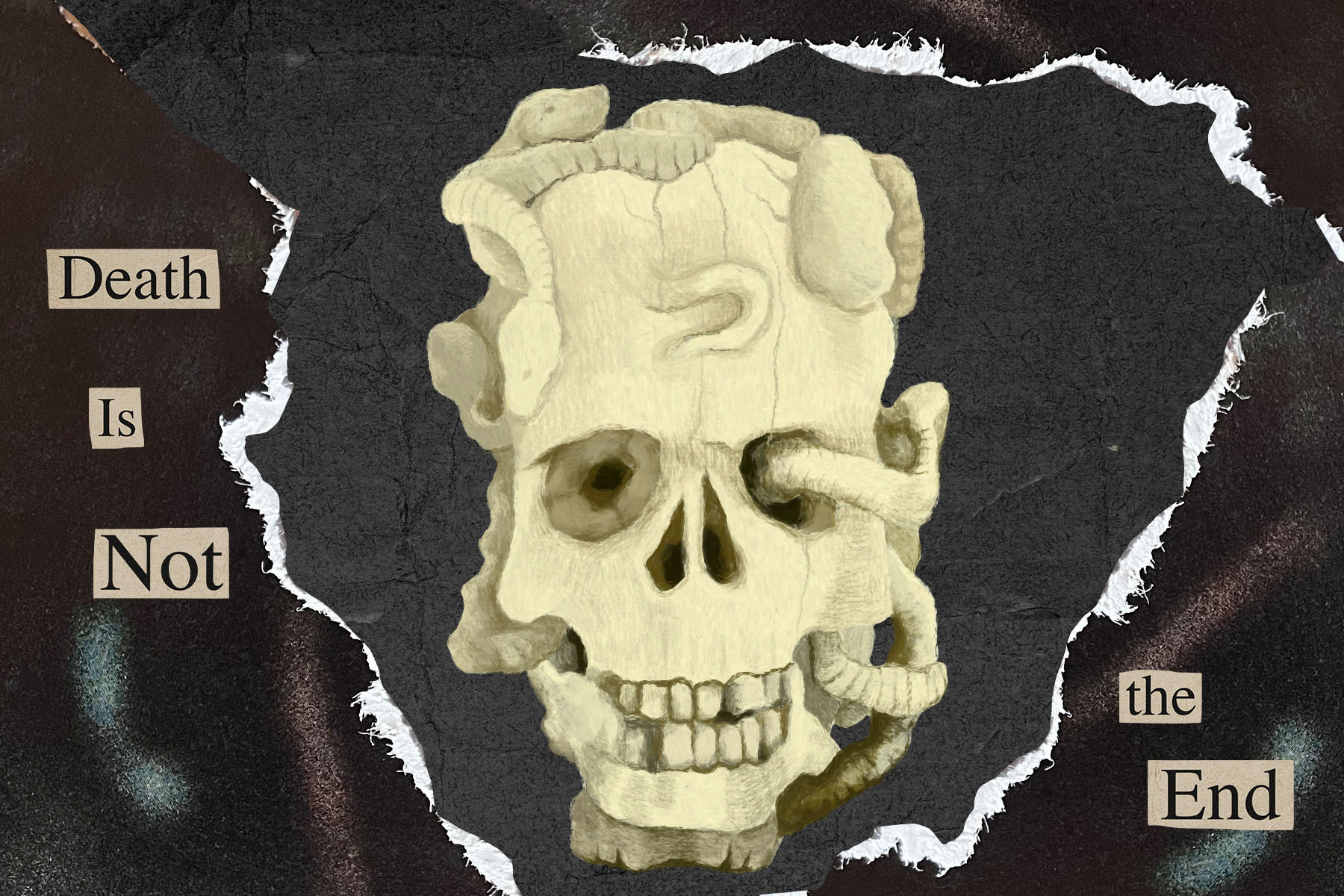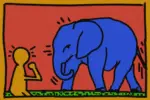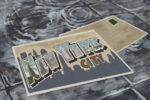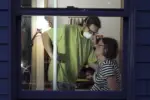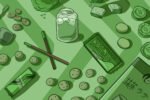Is death something that human beings should fear? Should people dread “the undiscovere’d country” as Hamlet does? Or should humans hope to live forever?
The Rubin Museum’s exhibition “Death Is Not the End” in New York City demonstrates that contemplating Buddhist and Christian beliefs about the afterlife can provide solace to those who fear life’s impermanence and provoke fear in those who want to avoid eternal punishment. Religious conceptions of other realms of existence provide humanity with the means to comprehend the unknowable.
Visualizing abstract concepts helps them feel more tangible, so “Death Is Not the End” presents various historical conceptions of the afterlife. The exhibit starts with artists’ depictions of hell, continues through portrayals of in-between states like purgatory and bardo and finishes with renderings of the realms of transformation and heaven.
Emblematic of the exhibition’s first section, a 19th-century painting titled “The Wheel of Life” depicts Buddhist beliefs about the cycle of life, death and rebirth called “samsara.” The Lord of Death, Yama, controls the entire wheel, so death lords over every stage of life. The painting portrays Yama as a fierce and unsettling being; three large eyes bulge from his face, and five skulls dangle from his hair. He forcefully grips the wheel with his teeth and long fingernails, screaming at the viewer to obey his commands.
At the center of the great wheel lies a rooster, a snake and a pig. The creatures respectively portray the three great mental poisons: desire, hatred and ignorance. The six realms of existence appear between the center and rim of the wheel. The upper half of the wheel contains the fortunate realms of the gods and humanity, and the lower half consists of the less fortunate animal and hell realms.
Many beings populate the green-colored land that dominates the brightly colored canvas as they rotate through the wheel of life. Humans inhabit a particularly significant stage of existence. While they eagerly await the next stage of rebirth, humans can learn much more about their earthly condition than other beings.
The 15th-century engraving titled “The Inferno” presents the very different Christian view of the afterlife. Sinners drown in everlasting damnation among the fiery flames of hell, which form the backdrop of the picture. The many tiers of hell that Dante famously describes in “Inferno” are this grotesque engraving’s central feature.
Punishments on the lowest rung include souls roasting on a spit, angry demons force-feeding people molten metal and decapitation via saw. The force-feeding continues on the next level: naked people eat a table for eternity as punishment for the sin of gluttony. On the third level, sinners boil in a cauldron, crying in pain as demons continually prod them with pitchforks. The top level contains punishments such as beheading, disembowelment and loss of limbs.
Satan lies at the center of the picture, covered from head to toe in large pustules that fester on his body. The backside of one human protrudes from his gaping jowl as he picks up two more in his hands for future consumption. Flames cover his horrifying two-horned visage, and horrible serpents slither down his leg.
Both religion’s representations of hellish realms terrify the viewer. Thankfully, the curators place the most horrifying images at the beginning of the exhibition. More soothing images are yet to come; the exhibit takes viewers through purgatory and bardo before finally leading them to heaven and resurrection.
An illustrated page from the 15th-century Book of Hours presents a Catholic depiction of the Parliament of Heaven. God sits in a golden throne on high, a parade of angels before Him. Personifications of justice and mercy lie at God’s side. Hopeful souls in limbo await God’s almighty judgment in the bottom left corner of the painting. The illustration has lasted for centuries as a vision of hope to those who remain pious on Earth. Even though justice and mercy may elude the faithful during their earthly lives, they await souls who enter heaven.
The painting “Four-Armed Avalokiteshvara in His Pure Realm” beautifully depicts the Buddhist realm of compassion. The realm is located on the mountainous island of Potala. Avalokiteshvara is the deity of compassion, so his devotees wish for rebirth on his wondrous island. Lush green trees surround his gorgeous red palace, and pink flowers drape down his palace wall. The red palace seems to shoot toward the blue sky. The great deity himself lies in a calm position in the center of the frame, awaiting those who practiced compassion throughout their lives.
Upon exiting this final section, the end does not seem so terrible. Hope in a possible afterlife remains for some viewers, but the importance of life on Earth is apparent to all. Regardless of whether viewers will experience a greater glory in the future, they can still do great work in the present that could change the world. There is no conclusive answer to the question of what happens after death.
In his play “Julius Caesar,” William Shakespeare perhaps answers the question of what to do about death best: whether it is indeed the ultimate end or not, “Death, a necessary end, will come when it will come.” Embracing the inevitable reality that all human beings will eventually meet their demise, “Death Is Not the End” leads the gallery-goer through artistic conceptions of life, death and the afterlife. The exhibit reminds viewers that, in the end, it is far better to enjoy life than worry about death.
“Death Is Not the End” remains on display at the Rubin Museum in New York City until January 24, 2024. Tickets are available here.


